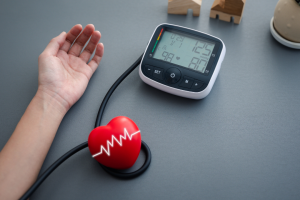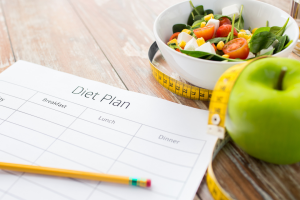
The idea of starting a family is exciting. It is often filled with anticipation, joy, and questions. Most often, the traditional method is simply to begin “trying to conceive,” i.e., having frequent intercourse in hopes that not long after, pregnancy symptoms will arise, signaling the fruitfulness of all your “efforts.” For many families, conceiving is not simple.
For those couples who are ready to expand their family, I want you to consider these tips before ditching your method of contraception. Like any major step in life, planning, research, support, and education help the process go smoother and may help you avoid certain pitfalls. In regards to pregnancy, some of these “pitfalls” could be life-altering. As a maternity nurse and birth educator, I strongly believe prenatal education should start long before you take a pregnancy test. Here are some simple things you can do now to help you prepare for pregnancy.
 Step 1: Schedule an updated physical for both you and your partner. Often, we focus solely on the woman when trying to conceive. Did you know, a man’s health plays a significant role in the health and well-being of the developing child? A man’s health, including his reproductive health, can even affect the health of the placenta.
Step 1: Schedule an updated physical for both you and your partner. Often, we focus solely on the woman when trying to conceive. Did you know, a man’s health plays a significant role in the health and well-being of the developing child? A man’s health, including his reproductive health, can even affect the health of the placenta.
 Step 2: Know your numbers. How’s your blood pressure? When was the last time you checked? The typical young woman without obvious health concerns may only go to the doctor when she feels sick. Most don’t know what their blood pressure is normally.
Step 2: Know your numbers. How’s your blood pressure? When was the last time you checked? The typical young woman without obvious health concerns may only go to the doctor when she feels sick. Most don’t know what their blood pressure is normally.
Did you know that if you have a family history of hypertension (diagnosed persistent elevated blood pressure), then you are more likely to develop preeclampsia in pregnancy? Preeclampsia is not only characterized by elevated blood pressure that occurs after 20 weeks, but it affects multiple body systems. This is why it’s recommended to have close monitoring by a physician if diagnosed.
If your systolic blood pressure is persistently hanging out in the 130s-140s (top number) or your diastolic is above the 90s (bottom number), this is something that needs to be discussed with your primary care doctor before you get pregnant. It is important that you know what your numbers are before getting pregnant, to increase the chances of a healthy and safe pregnancy for you and your baby.
 Step 3: The next step is to evaluate your diet. Once again, this goes for both you and your partner. It is not only about adjusting your diet for weight loss but becoming mindful of all the things you consume and evaluating if they are safe for a developing baby.
Step 3: The next step is to evaluate your diet. Once again, this goes for both you and your partner. It is not only about adjusting your diet for weight loss but becoming mindful of all the things you consume and evaluating if they are safe for a developing baby.
Some herbal teas and supplements may need to be reduced or discontinued when trying to conceive. If you need help with this, talk to your physician or a nutritionist for guidance.
 Step 4: Ask yourself, “Am I financially ready?” If you became pregnant tomorrow, would you be okay? Like really, do you have savings? How’s your living arrangement? What if you had to be on bed rest and couldn’t work? Do you and your partner have a backup plan? Asking these questions can help you avoid a lot of pain and challenges down the road.
Step 4: Ask yourself, “Am I financially ready?” If you became pregnant tomorrow, would you be okay? Like really, do you have savings? How’s your living arrangement? What if you had to be on bed rest and couldn’t work? Do you and your partner have a backup plan? Asking these questions can help you avoid a lot of pain and challenges down the road.
This final step is crucial especially in a society where maternal health and newborn outcomes are strongly connected to provider choice and place of birth. Research the obstetrician-gynecologists and midwives in your area. Research providers in your area that support your birth goal and have a good reputation while working on your health and lifestyle. Schedule a pre-conception check-up. This is also crucial if you know you have pre-existing health conditions.
If you would like to learn more about prenatal health, get information on birth education, and labor preparation visit www.crystalannroberts.com. For a list of upcoming birth courses in South Florida follow this link: www.calendly.com/jonahsbirth. Wishing you a healthy pre-conception and pregnancy journey.













